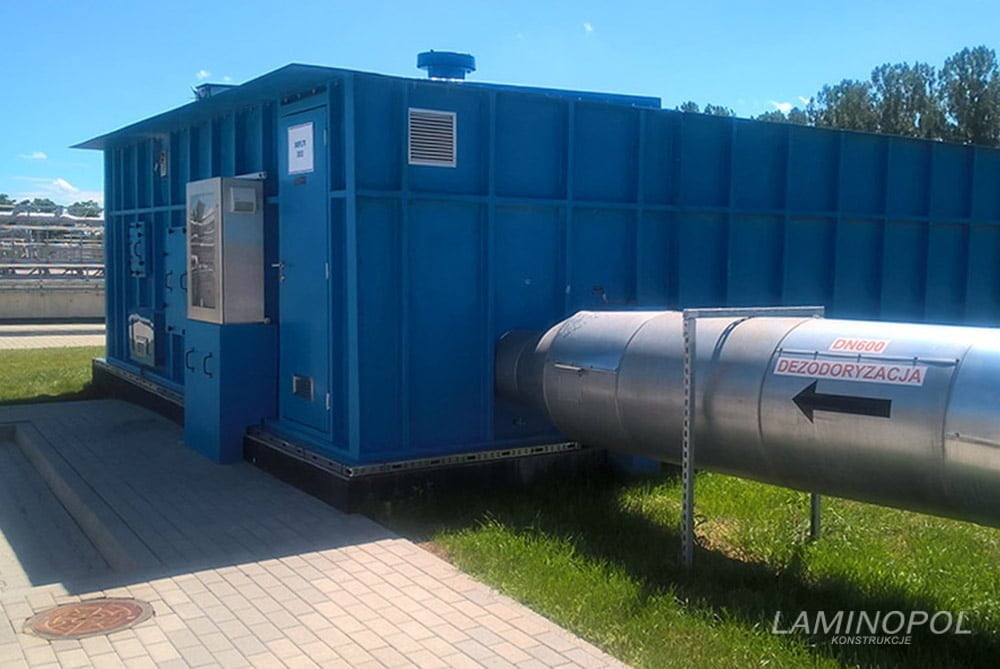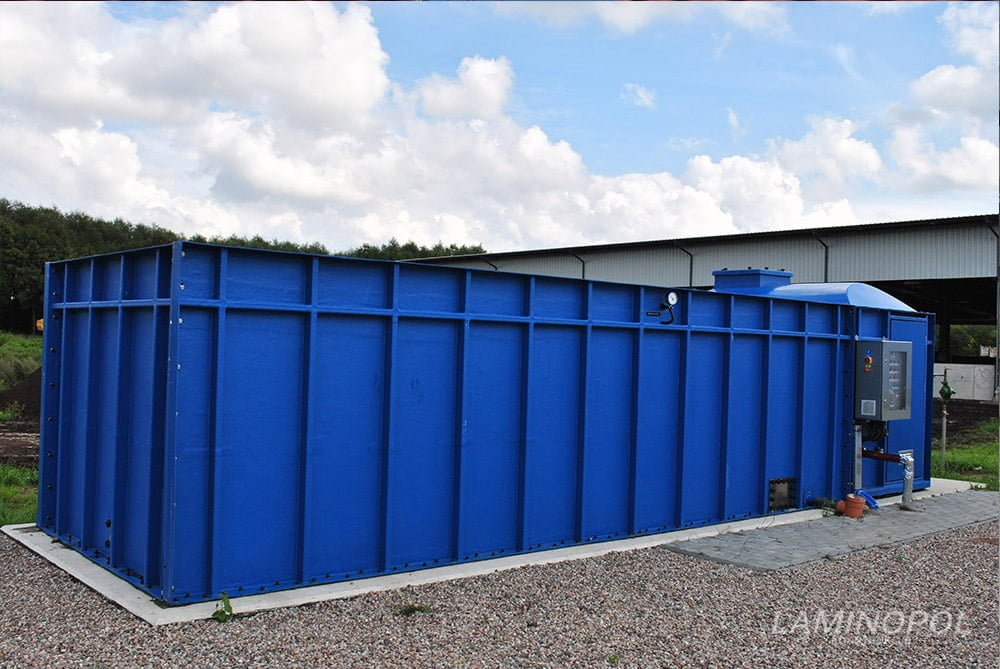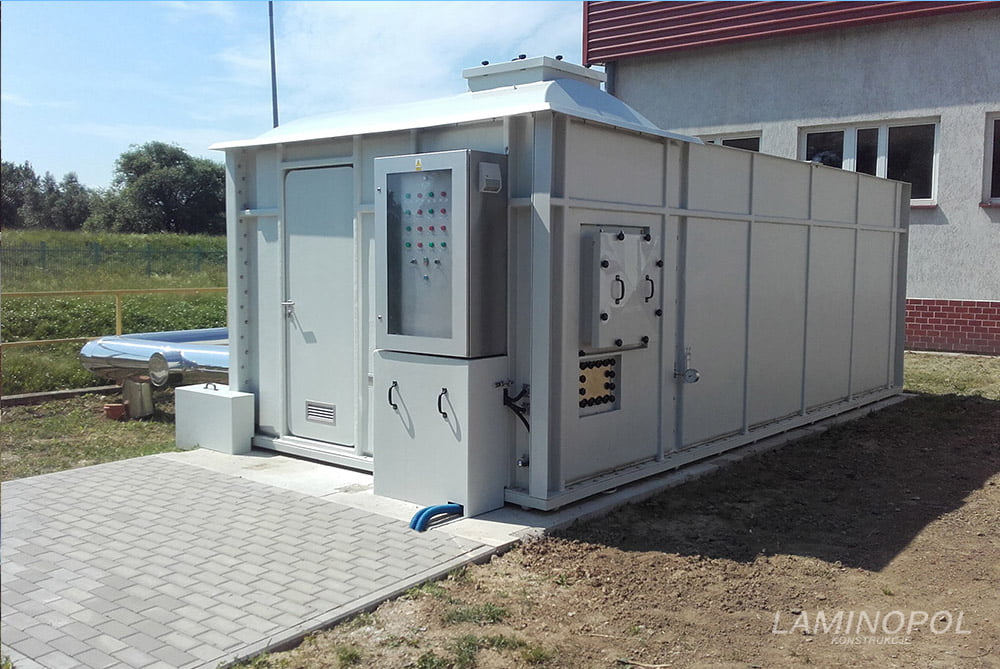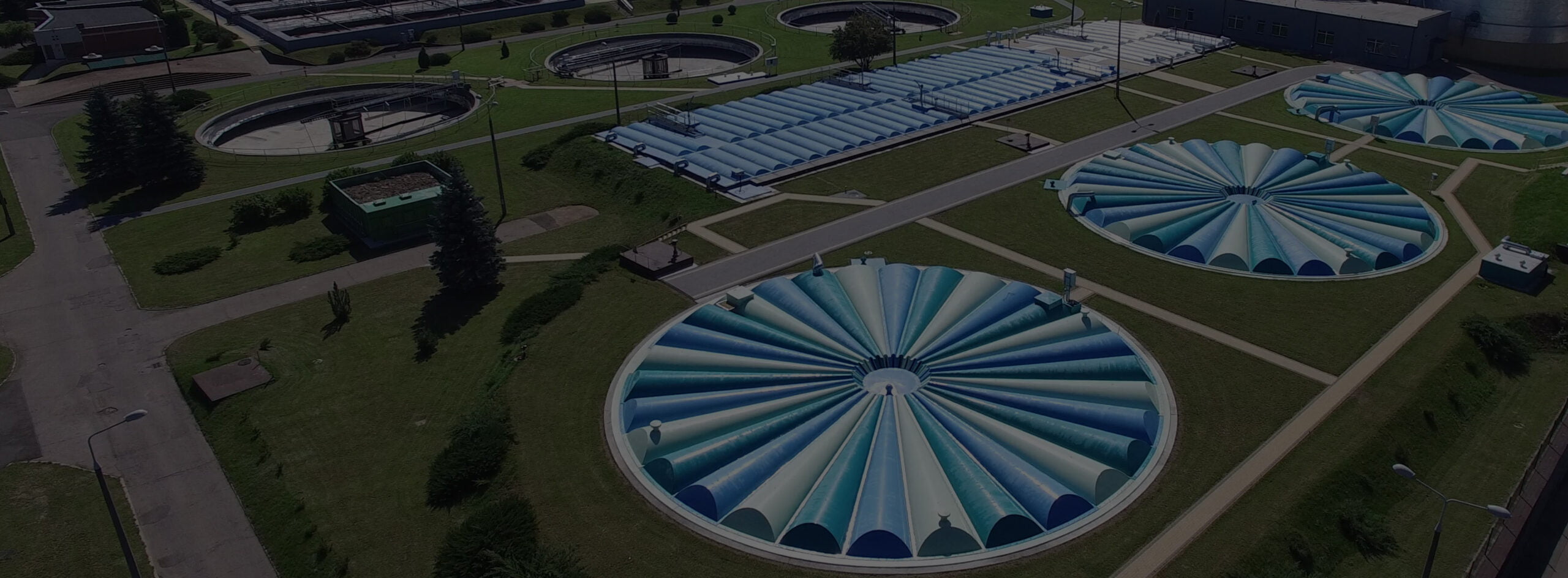
Roof coverings, Bio-filters
Roof coverings are intended for air-tight sealing of reinforced concrete and steel tanks in order to limit the space into which there is an emission of gaseous pollutants or bacterial aerosols emitted into the air as a result of technological processes taking place in the tanks.
Roof coverings are made of LPS polyester glass laminate. Thanks to appropriately selected raw materials for the production of the composite, the laminate coating is characterized by long-term resistance to the aggressive environment inside the hermetic tank and to UV radiation.
The most important advantages of roof coverings:
- low own weight
- free selection of architectural shapes
- no need to restore protective coatings
- possibility of disassembly
The structure of the roof covering consists of coating elements. The individual elements of the covering are connected with each other with overlap using bolted joints made of A4 steel (AISI 316) with EPDM chemical resistant rubber seal. Depending on the needs, the covering can be made with thermal insulation by laminating the PUR foam into the covering structure. The complete roof covering is equipped with a drip, inspection hatches, roof intakes and connectors for the ventilation system. The covering elements can be made in any colour according to the RAL palette and can be covered with anti-slip grit.
The coverings are designed, manufactured and assembled in accordance with the provisions of the Technical Approval IOŚ – PIB No. AT / 2016-08-0108 / A4 and the certificate No. NC-2384 confirming the compliance with requirements of the standards ISO 9001:2008 and PN-N-18001:2004.
The measurable effect of air sealing is the improvement of the quality of the environment and life of the local residents by significantly reducing the odour nuisance and microbiological pollution of the air.
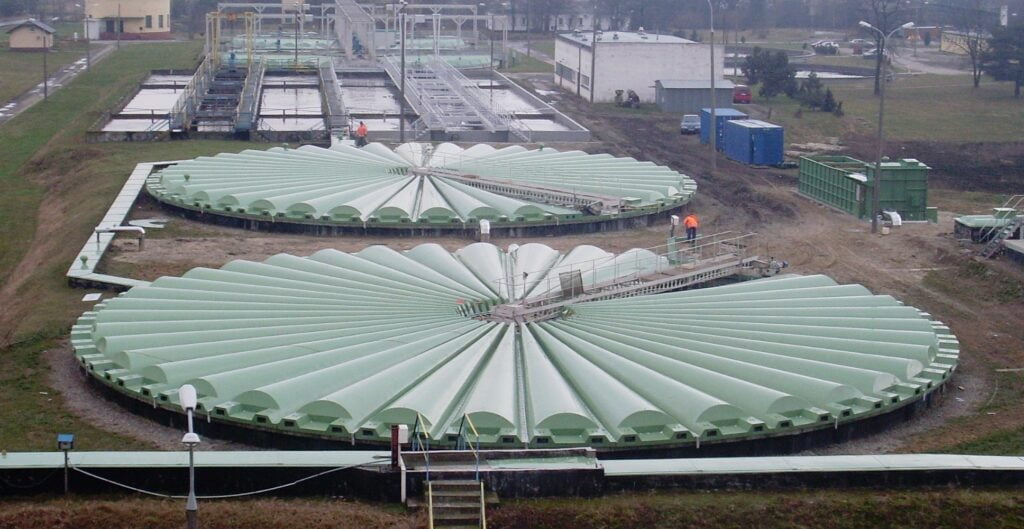
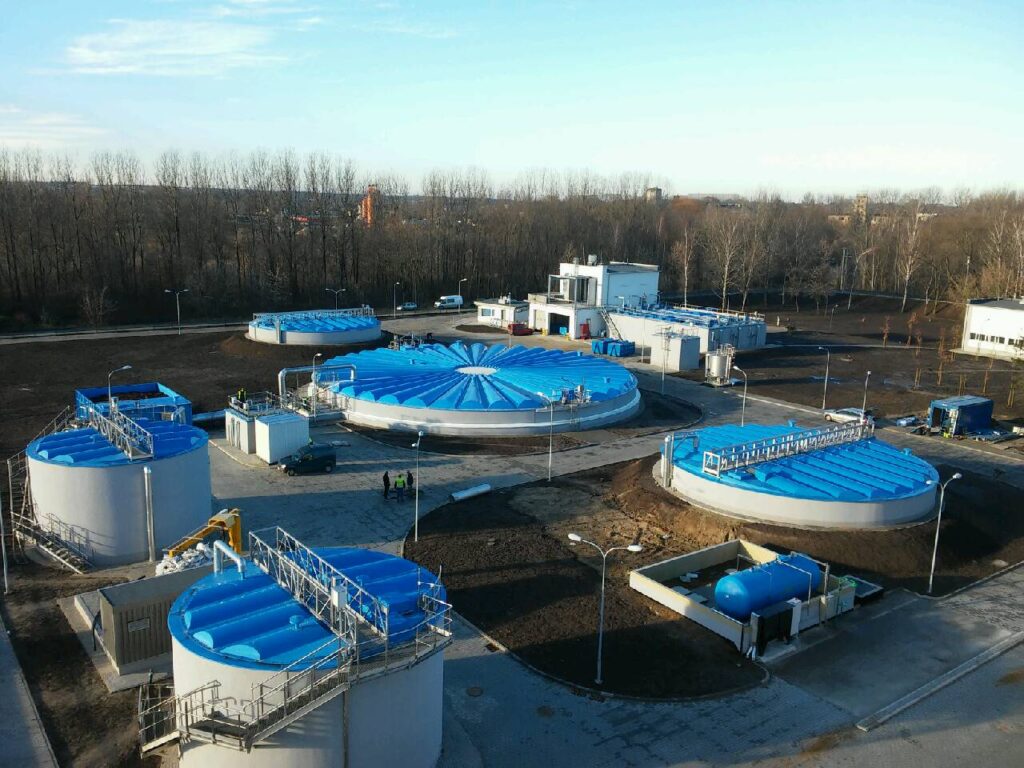
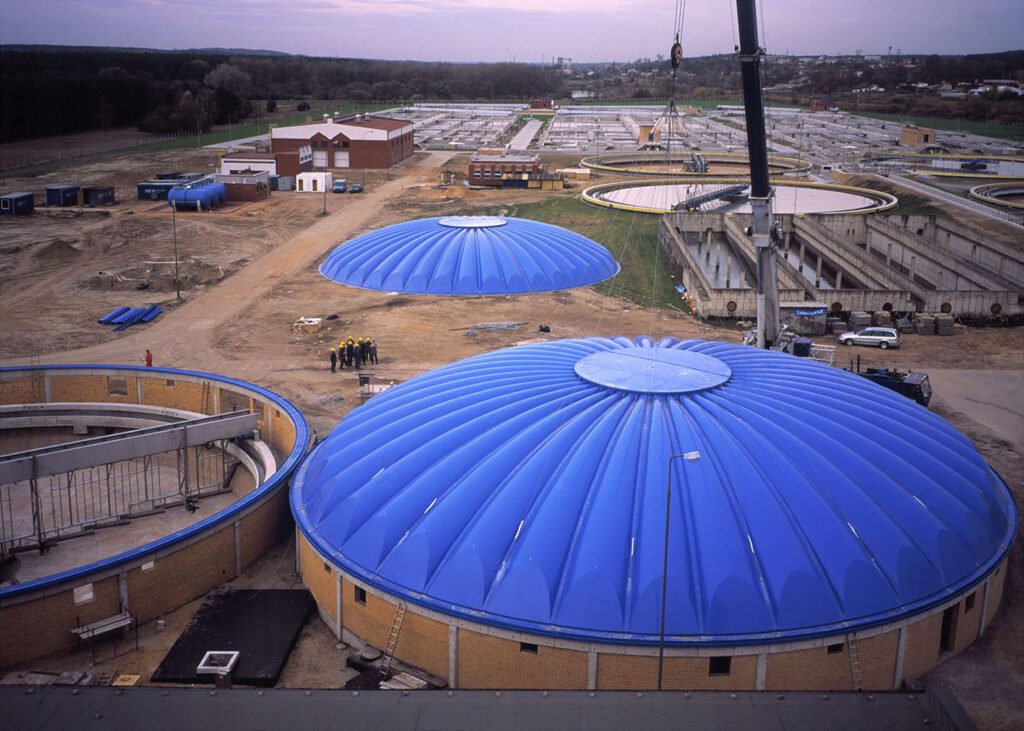
Bio-filters
Bio-filters are used to clean the air from continuously operating installations, ensuring uninterrupted distribution of polluted air to the device. In most cases, we use bio-filters to purify air from municipal and company sewage treatment plants, sludge treatment plants, composting plants and municipal waste sorting plants, as well as the air from production processes.
Types of compounds that are removed by this method are as follows: organic compounds (e.g. VOC), inorganic compounds (e.g. hydrogen sulphide, ammonia, mercaptans).
The elimination (removal) of air pollutants takes place by decomposing them due to the vital activity of bacteria inoculated in the biomass filter material. It is the only method of eliminating harmful pollutants from the air through their oxygen decomposition. All other air purification methods are based on the principle of transferring pollutants unchanged to liquid or sorption bed.
Process advantages:
- possibility of purifying air pollutants with very high and low concentrations
- high efficiency of air purification throughout the declared warranty period,
- relatively low operating costs compared to other air purification methods.
Useful advantages:
- all selected elements, components and the housing of the bio-filter are made of materials resistant to UV radiation, the influence of the atmosphere, the influence of air pollutants and their condensate. In the standard version, the housing of the bio-filter is made of polyester-glass laminate from carefully selected raw materials that guarantee long-term resistance to operating conditions and construction durability for over 20 years.
- used filter material is not hazardous waste within the meaning of the Act on waste materials.
The use of our air purification devices guarantees the compliance with the environmental impact criteria specified by the Ordinance of the Minister of the Environment of 26 January 2010 on reference values for certain substances in the air (Dz. U. No. 16, item 87), which means that the use of our devices will limit the negative impact of the plant to the boundaries of the area to which the legal title is held, in accordance with the obligation resulting from the Environmental Protection Law.






